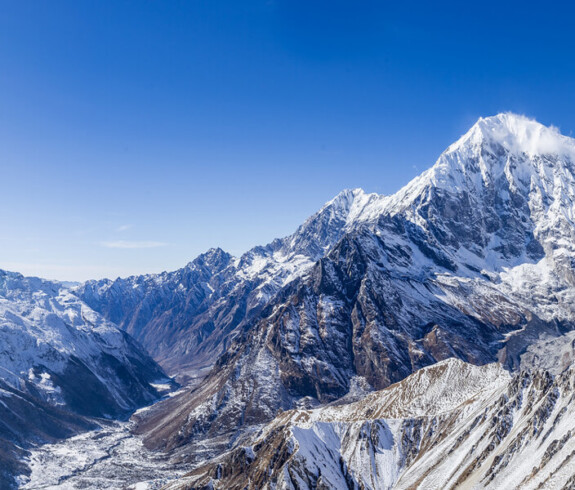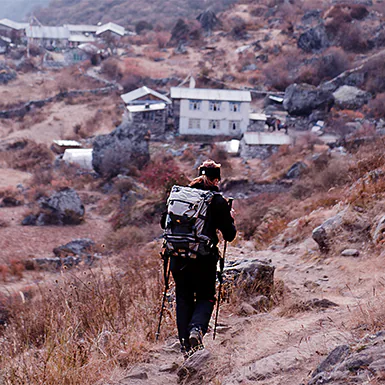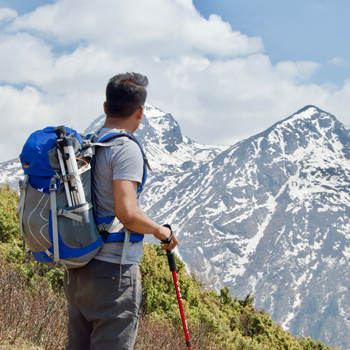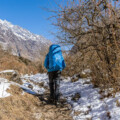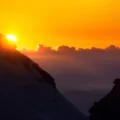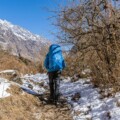The Langtang region is located north of Kathmandu and borders Tibet. It is protected as Langtang National Park. Langtang Region Trekking is a moderate-level trekking destination in Nepal. You can witness the high peaks, including Langtang Lirung, and the ultimate goal of this region is Crossing Lauribinayak Pass.
If you visit Langtang Valley Trek for 7 Days, you will be blessed to see the significant Himalayas of Nepal, ranging from Makalu in the east and Annapurna in the west. Manaslu and Ganesh Himal can also be seen from this region. After the Annapurna and Everest regions, Langtang is the most preferred trekking destination for all tourists.
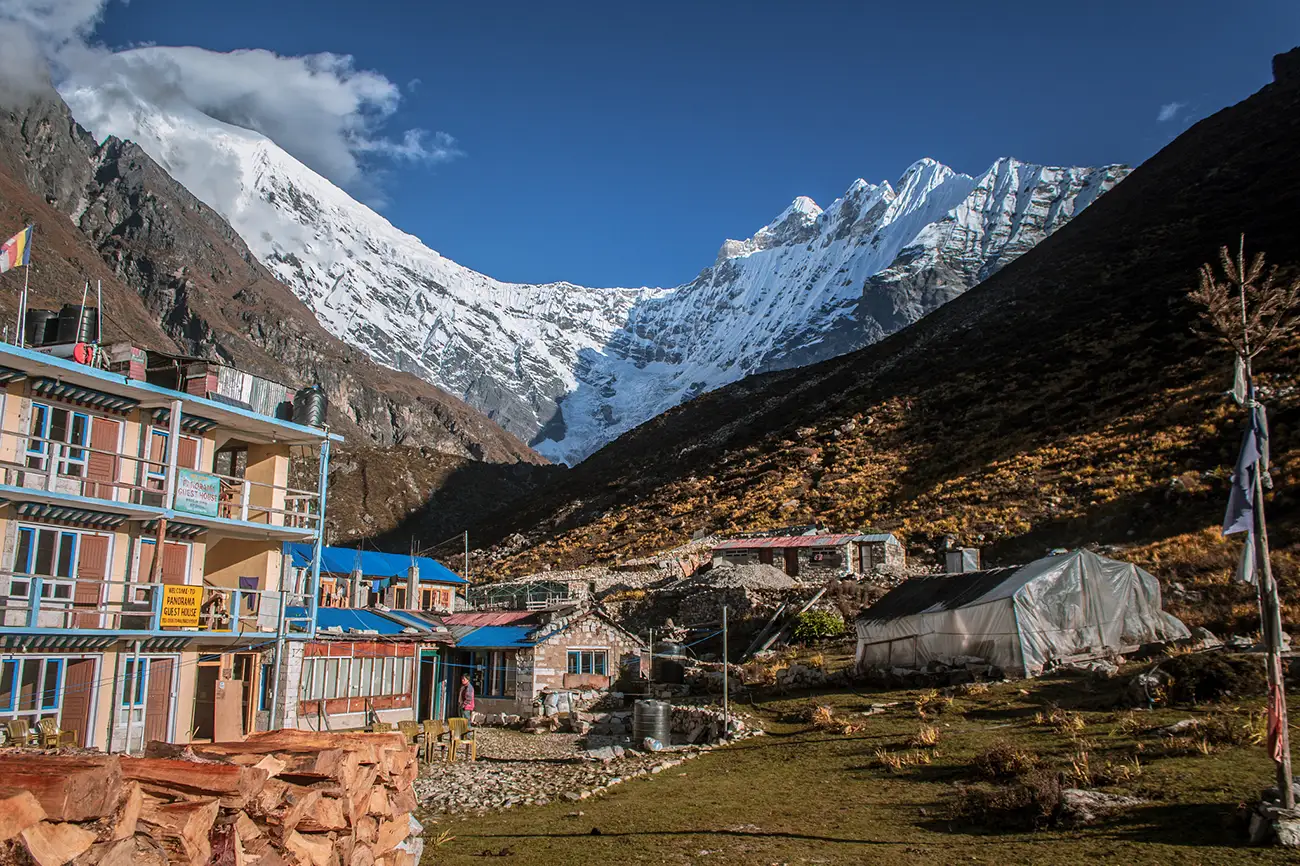
Langtang Valley Trek (7 days) is one of the short treks in Langtang, where we can explore Kyanjin Gompa and Langtang Valley. We offer a 7-day Langtang Valley trekking package at a straightforward and cheap cost. This is a 7-day trek, but you will spend five days in Langtang Valley, and two days include traveling. This is one of the named and popular trekking areas near glaciers, valleys, alpine, and grazing yaks in the pasture.
The Langtang Valley short trek is the most diverse trek near Kathmandu. It offers majestic sights of bamboo forests, waterfalls, and various rhododendrons. In Nepal, the Langtang Valley trek does not have the same infrastructure level as the Annapurna and Everest regions, but it delivers more spectacular views quickly.
Langtang Trek is one of Nepal’s top five best treks. It is strongly recommended for trekkers who want to experience Nepal’s majestic views and natural scenery in a short time while being away from the crowd. You do not need to have previous experience with this trek.
Langtang is full of variations of beautiful places with both natural and religious tenets. We can explore different landscapes, from the holy lakes of Gosaikunda to the natural hot springs. Trekkers will enjoy Sherpa’s company, love, and affection; also, they can explore their culture and lifestyle. People earn money here through tourism and yak farming.
There is a belief that anyone in this region is from the Tibetian family. Hence, we can experience the cross-cultural diversities of Tibetian and Nepali ethnic groups. Hindus and Buddhist devotees visit this region with religious faith.
The attractions of this place are the Langtang village excursion, the Yak cheese factory, the Langtang glacier sights, the exclusive Kyangin Gompa view, the Langtang Lirung expedition, views of Manaslu and Ganesh Himal, crossing the Lauribinayak pass, Gosainkunda, and Sherpa culture at Helambu.
Starting of the Langtang Valley Trek Journey
In our Langtang valley, our seven-day trek will begin with a day’s bus ride from Kathmandu to Syaprubesi. On the first day, we will walk to Syaprubesi. Then, we will walk towards Lama Hotel and Langtang Village. We will enjoy staying at the tea house. After exploring the Langtang valley, we will return to Kathmandu.
Significant highlights of Langtang Valley Trek 7 Days
- There is no need to book a flight; we can drive this trek within 7 & 8 hours.
- Trekking through Langtang Valley is also known as trekking through the glaciers.
- Be amazed by the panoramic views of mountains such as Langtang Himal, Langtang Ri, and Ganjala Peak.
- Diverse flora fauna
- You can delve into Tibetian-influenced culture
- One of the world’s best valley
- Varied Vegetation and landscapes.
- Stay in charming teahouses along the route.
Detailed Itinerary for Langtang Valley Trek 7 Days
Day 1: Drive from Kathmandu to Syabrubesi
Please let us know your arrival time in Kathmandu. Our representative will pick you up from Tribhuvan International Airport and take you to the hotel, but our package will start only on the second day of your arrival.
Our representative will be at your door at 6:30 a.m. in the hotel. After a light breakfast, we will start our journey with a fantastic drive of around 6-7 hours through the meandering road, lush green forest, high hills, and gracefully flowering riverside.
We will enjoy the delightful views of the Himalayas and marvel at the unique lifestyle through the terraced fields and rural towns. We will enjoy our lunch at Trishul before proceeding to Dhunche. From the beautiful place of Dhunche, we will move towards Syabrubesi.
Altitude: Syabrubesi (1,550 m)
Meals: Breakfast, Lunch, Dinner
Accommodation: Tea House
Day 2: Trek to Lama Hotel
Today is our first day of trekking. First, we will cross Bhote Khosi following the Langtang River; then, we will enter Langtang National Park. We are trekking to the rising sun by journeying through the Langtang Khola, thick woodlands, and several suspension bridges. The trails seem too tricky, but it is not.
Trekking Duration: 5 hours
Altitude: Lama Hotel ( 2380 m)
Meals: Breakfast, Lunch, Dinner
Accommodation: Tea House
Day 3: Trek to Langtang Valley
After breakfast, we will start trekking towards MUndu via Langtang Valley. Our trail will be entirely dense forests. After steadily climbing through the valley, we will leave the tree line behind. We will also enjoy the Magnificent views of Langtang Lirung. We will pass through the water factories, watch chortens, and see stunning hills. Then, we will go back to the previous place.
Trekking Duration: 6-7 hours
Altitude: Langtang Valley (3430 m)
Meals: Breakfast, Lunch, Dinner
Accommodation: Tea House
Day 4: Trek to Kyanjin Gompa
After breakfast, we will escape the town and pass through the yak pastures. Also, we will cross the biggest Mani divider in Nepal. We are leaving the forest behind as we climb above the tree line to see the majestic views of Langtang Range. From up, we will see the lush green valley. The land is an inhabitant of Sherpa, who is known as the children of the Himalayas. You can stroll around Kanjin Gompa, appreciating the ice sheets, yaks, icefalls, and perspectives.
Trekking Duration: 3-4 hours
Altitude: Kanjin Gompa (3870 m)
Meals: Breakfast, Lunch, Dinner
Accommodation: Tea House
Day 5: Trek to Kyanjin Ri
We will wake up early and start trekking to see the stunning sunrise views in Kyanjin Ri. After breakfast, we continued our trek to the Lama Hotel. Because it has a downhill, it will take about 4 or 5 hours to stroll from Kanjin Gompa to get to the lama hotel. In this way, we can see and explore the Tamang religion and traditions, which seem the same as the Tibetans.
Trekking Duration: 4-5 hours
Altitude: Kyanjin Ri (4800 m)
Meals: Breakfast, Lunch, Dinner
Accommodation: Tea House
Day 6: Trek over to Syabrubesi
It is our last day in the trekking area. Today, we will walk down to Syabrubensi. We will enjoy the simple downhill trail full of lush green vegetation. After arriving in Syabrubesi, we will have lunch.
If we have free time, we can enjoy the stunning views of Bizzare hill town.
Trekking Duration: 4 hours
Altitude: Syabrubesi (1,550 m)
Meals: Breakfast, Lunch, Dinner
Accommodation: Tea House
Day 7: Syabrubesi to Kathmandu
After breakfast, we will drive towards Kathmandu; it takes about 6-7 hours. After you arrive in Kathmandu, our staff will pick you up. If you want to spend more time in Kathmandu, please consult us. We can recommend the best places to visit. Also, today, we will enjoy our beautiful trek farewell.
How challenging is the Langtang Valley trek for 7 Days?
Langtang Valley is known as the moderate trek. There is a proper place for tasty food and accommodation. There are no confusing trails and rugged terrains.
This trek is moderate, but doesn’t mean it has no difficulty. There is no higher altitude like in Everest Base camp; in this trekking route, you will be hit only 5000m in height.
Factors of difficulty in Langtang Valley Trek
As I already mentioned, the Langtang Valley trek is a moderate-level trek. However, there are some complications and factors you should consider.
Altitude sickness
Anyone can suffer from Altitude sickness at higher altitudes. Specifically, you will gain some altitude once you start trekking in Nepal. However, the Langtang Valley 7-day trek does not take you to extreme heights like the Everest region.
However, altitude sickness is possible, so you should maintain proper acclimatization.
The symptoms of altitude sickness include nausea, vomiting, difficulty breathing, and many more; if you experience these symptoms while trekking, don’t hesitate to share them with your guides and friends.
Once you reach a friendly altitude, rest until you feel secure. Please consult with your doctor about altitude sickness. It’s better to know your body before taking any medicines. Diamax is one of the best cures for altitude sickness.
Remote Places
Langtang Valley is known as one of the remote places near Kathmandu. There are no proper roads or modes of transportation.
Hills and mountains surround small tracks. The remoteness of any place means that there is unavailability and improper accessibility. You may be sick or injured. It takes more than a day to reach a proper hospital. The quickest way is to fly to the nearest hospital and medical, increasing the money.
Unavailability
As we already know, Langtang Valley is known as a remote place with minimal facilities. Proper transportation is limited to flying or carrying goods.
Food and water would be more expensive as you go higher in altitude. It costs so much only for a liter of water.
A hot shower and charging your devices will cost some amount. These little things add to the difficulty of this trek.
For more information, please check our blog on “Langtang Valley Trek Difficulty.”
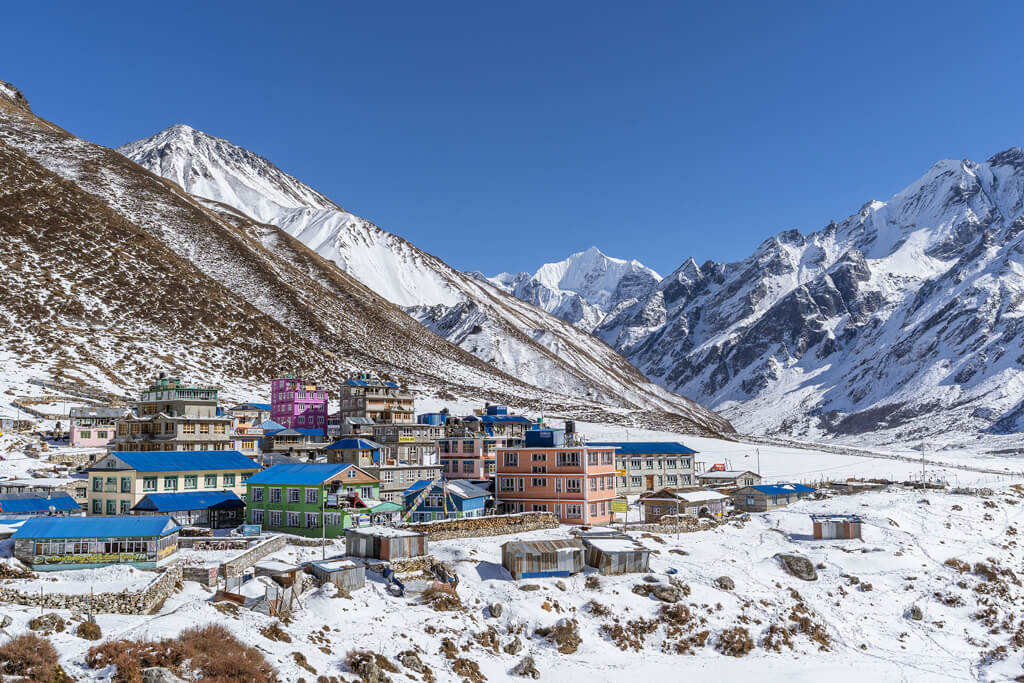
Best Time For Langtang Valley Trek
If you plan to visit Langtang Valley near Kathmandu, the region has different winter, monsoon, autumn, and spring weather conditions. But the best time to visit Langtang is autumn and spring.
These seasons have good weather and bearable temperatures. During this season, you can walk on a sunny, warm day on the dry trail. As we all know, the morning and night will be colder than today.
During this season, you can walk through oaks, rhododendrons, and diverse Vegetation. These seasons offer crisp views of the chain of the Himalayas under the blue sky.
Langtang Trek During Autumn (September to November)
Autumn is the best season to trek in Langtang. The weather will remain functional from September to November, and the temperature will be stable. If you trek this season, you can walk under the blue skies, fresh air, and dry trail.
You may feel cold in the morning and night, but the temperature during the day will be okay. This temperature and pleasant environment will create the fondest trekking memories.
Also, in the Autumn season, the sun shines sharply, allowing unobstructed views of all mountains and valleys. Thus, you do not have to face the fog problem.
Langtang Valley Trek During Spring (March to May)
It is also known as the second-best season to visit the Langtang region. In this season, you will have a warm day. There will be moderate temperature.
The trail will be beautiful and memorable because the lush forest will be full of rhododendrons. You will see wildflowers along the way. However, the trek will become more exhausting because of the warm sun and soft mountain breezes.
We can see the unobstructed views of mountains during this season and walk in beautiful forests.
Langtang Valley Trek During Summer/Monsoon (June to August)
Langtang Reagan faces the summer season in June, July, and August. There will be heat at the lower temperature because of the high temperature. But there will be a cold temperature while we rise higher.
The rainfall may make the trail slippery, with bugs, parasites, beetles, leeches, and earthworms. But on the lighter side, you will enjoy the rainwashed surroundings with greenery everywhere. The Summer region in the Langtang Valley is a blissful time for all nature lovers.
Sometimes, dense forests may have all the attractive beauty of nature, but heavy rainfall will eliminate it. It will offer more precise and exciting views of the mountainscape and the surrounding landscapes. As this is the season of planting, you will have a fantastic time looking at the terraced farms and the working locals in their typical ways.
Langtang Valley Trek During Winter (December to February)
The winter season starts in December and ends in February in Langtang Valley. The day is moderately cold, but the morning and night are freezing.
In winter, you will explore the snow-covered Langtang under blue skies and in mountain regions. There will frequently be changes in temperature and weather.
Since fewer trekkers prefer the winter season to trek, if you don’t want any crowd and enjoy the Langtang Valley trek freely, please hit your mind with this season.
Please share your choices regarding the trek with us. We will plan the best itinerary for the Langtang Valley trek. For more info, please check our blog on “Best Time For Langtang Valley Trek.”
7 Days Langtang Trek Costs
Trekking Costs are vital in your 7-day Langtang Valley Trek. With $700-$900, you can cover all the Langtang trekking costs. This total cost includes food, accommodation, permits, transportation, etc.
Packing list for 7 Days Langtang Valley Trek
The seven-day Langtang Valley Trek is one of Nepal’s most magnificent and jaw-dropping Himalayan experiences. During this trek, you will walk one of the inspiring and challenging routes.
There are climatic alternations during the Langtang Valley trek, so you must prepare your packing according to your trekking season.
We have listed some information about packing for your exceptional Langtang Valley trek. The following are the clothing and gear you need during the trek.
Langtang Valley Trek Backpacks
Packing Satchel
On your 7-day Langtang Valley trek, a packing satchel helps you carry your goods and equipment. It also enables you to classify clothes, cables, and electronics.
A Big Rucksack
Big Rucksack helps you to carry the luggage for solo trekkers.
Supportive daypack
It would help if you had a favorable day pack throughout the trek. This day pack will help you carry essential hiking snacks, a down jacket, waterproof trousers, a rain jacket, and a camera. It also has plenty of space for sunscreen, a hat, and other personal items for your trek.
Waterproof Dry Bag
A waterproof dry bag will protect your essentials from rain. It has plenty of space for a warm jacket, snacks, and rain gear.
Clothing
Layering is an essential concept for clothing during your Langtang Valley trek. Proper attire will help you avoid all the winds on this trek. The trekking clothes and other essentials are made of various fabrics, such as cotton, wool, and denim, to absorb moisture.
Inner Layer
At least four pairs of quick-drying and breathable underwear for your whole trek. Thermal wear is comfortable and warm. Thermal wears help to keep you warm.
Upper Layer
The artificially made upper layer is ideal for Langtang Valley’s short trek. It is light, easier to wash, and tends to dry quickly.
During this trek, you can wear long-sleeved shirts to avoid sunburn. Short-sleeved shirts are also helpful during summer treks.
Lower body layer
For Langtang Valley Trek, 7 Days of quick-drying, convertible hiking, and semi-waterproof are comfortable.
You can also wear wool trousers or waterproof trousers to keep you warm and cozy at higher altitudes.
List of extra clothing
- Down vest
- Hiking Trousers
- Polypropylene shirts
- Light thermal tops
- Hiking shorts
- Non-cotton underwear briefs
- Waterproof shell-pants, breathable fabric
- Lightweight thermal bottoms
- Waterproof, breathable fabric shell jacket
- Fleece or wool trousers
Gloves
Gloves help keep hands hot and warm during the trek and prevent frostbite at higher altitudes. So, it would help to pack outer and inner gloves to protect your hands from wind and water.
Gloves or handwear
- Lightweight poly-liner gloves
- Mittens (seasonal)
- Lightweight wool or fleece gloves
Footwear
Blisters are a significant concern during the Langtang Valley trek. Consequently, it would help to have reliable boots and socks to comfort your ankles and soles during the long hike.
Hiking boots
The hiking boot should be lightweight, comfortable, and durable, which will help you navigate the diverse geography during the trek. It would help if you walked through plain lands, wet snow, muddy ground, and grainy riverbanks, so pack a reliable pair of hiking boots to ease your trek.
Pair of sandals/flip-flops
A pair of shoes is helpful in lodges and hotels. Sandals or flip-flops are also beneficial when showering or using the bathroom.
List of footwear
- Trainers or running shoes
- Thin, lightweight inner socks
- Hiking boots with spare laces
- Cotton socks Gaiters
- Hiking boots with extra laces
Sleeping Accessories
Sleeping bags are the center of your packing list for this trek. Although most lodges provide blankets, a sleeping bag will help you stay warm during cold nights.
Both Sleeping bag and sleeping bag liner will be useful
List of sleeping accessories
- Sleeping Bag Liner
- Sleeping bag
Headwear
It would help to pack an excellent pair of headwear, like a beanie or a headband, during the Langtang Valley trek. It will help keep your head warm and protect it from rain, snow, and excessive sunlight rays.
Sunglasses
Sunglasses help protect eyes from harsh sunlight at higher altitudes, absorb eye stress, and protect them from the wind.
Hat or fleece hat
The sun hat will help the skin of your face during trekking in summer, especially at a lower altitude. A fleece that will protect your head from snow and the river at a higher altitude.
List of headwears
- Headlamp with extra batteries and bulbs
- A warm hat
- Sunglasses with UV protection
- Bandana or headscarf
- Prescription sunglasses
First Aid
On this journey, you may suffer from altitude sickness at higher altitudes or a common cold due to temperature variations. So, you need to pack proper first aid kits.
To avoid the risk of high altitude sickness, you should carry Diamox and Paracetamol, and Imodium can be helpful in case of unpleasant diarrhea and sudden fever.
List of Medications:
- Chlorine Dioxide Tablets/ Water Purification Tablets
- Paracetamol
- Antiseptic Cream
- Imodium
- Small Bandages and plasters
- Insect Repellent
- Antiseptic Wipes
- Diamox/ Altitude Sickness tablet
Toiletries
- Toothbrush/paste
- Medium-sized towel
- Nail clippers
- Deodorants
- Multi-purpose soap
- Wet wipes
- Anti-bacterial handwash
- Tissue /toilet roll
Extras
- Swimsuit
- Book
- Binoculars
- Guide book
- Voltage converter
- Journal and pen
- Lightweight pillowcase
- Plug adapter
Important documents and items
- Valid passport
- Proof of insurance
- Two extra passport-size photos
- Separate photocopies of passport
- Airline tickets
- Traveler’s checks
- Dollars, Euros, or pounds in cash for purchasing goods or paying for them
- Map
For more details, please check our blog on “Langtang Valley Trek Packing List.”
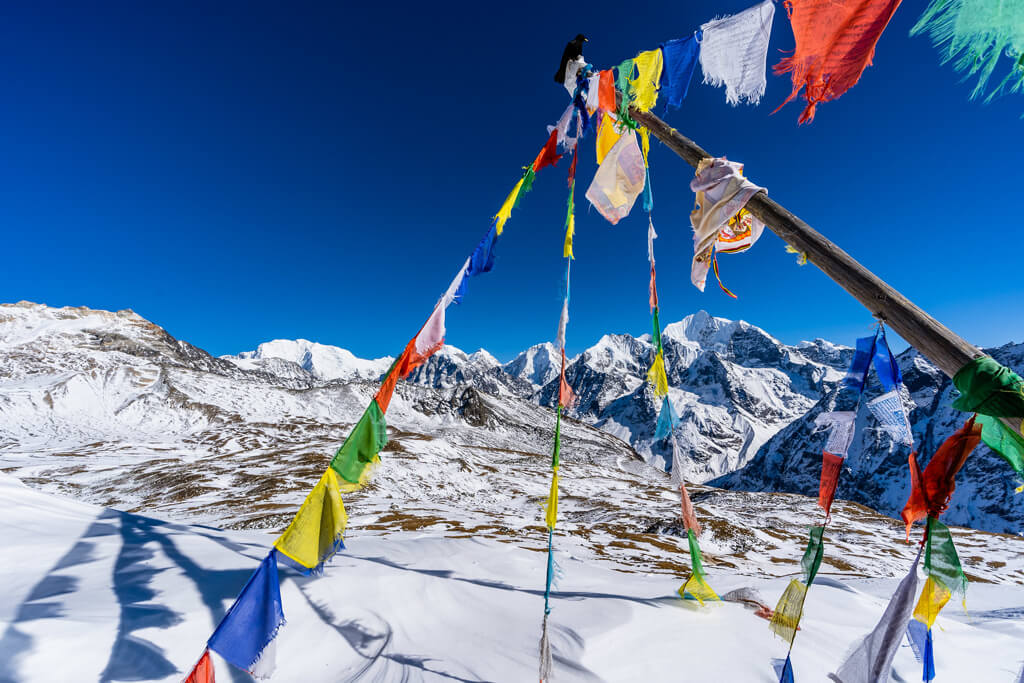
7 Days Langtang Valley Trek FAQs
How do you get to Langtang Valley?
Langtang is a region in the Himalayas north of the capital city, Kathmandu Valley, and borders Tibet. It is 61.8 km away from Kathmandu. We can drive from Kathmandu for 4-5 hours to reach Langtang Valley. Our path will be full of stunning views of mountains.
Where to start the Langtang Valley trek?
As in the first, our drive will start in the Kathmandu valley, but our trekking journey starts in Syabrubesi, from where we visit the Lama Hotel and move towards Kyanjin Gompa. The trail combines beautiful alpine and rhododendron forests, glaciers, rivers, extended pastures, and breathtaking peaks bordering Tibet.
How challenging is the Langtang Valley trek?
Langtang Valley is known as the moderate trek. There is a proper place for comfort food and accommodation. There is no doubt to say that it is one of the best trekking destinations. There are 360-degree panoramic views of the snow-capped mountains. There are no confusing trails and rugged terrains.
Do you need a guide for the Langtang Valley trek?
Langtang Valley trek means trekking over the Langtang Valley. Throughout the journey, you will pass through the uncivilized villages. It is not easy to travel to Langtang Valley without a guide. So we recommend you take a guide and porter to enjoy your short trek in Langtang Valley. All guides will be there to help you with your needs. Also, they have to use safety measures at high elevations. They take care of your acclimatization and itinerary. They will give you information about many essential things, such as places, culture and tradition, lifestyle, and many meanings of festivals, education, occupation, and many more things. They would be there to save from wrong decisions, directions, etc.
Trekkers need not worry about their lodging and food facilities; guides will be there to care for them. At the checkpoint, trekkers will rest while guides show you all your passports and visa documents. Langtang Valley will be an entire Sherpa people; guides will communicate with them and try to provide you with all the small facilities you need. While you have a guide, you only need to walk forward.
Who can trek to Langtang Valley?
Langtang Valley Trek is perfect for trekkers who want to see the natural beauties of nature. It is also ideal for both experienced and inexperienced trekkers. People with sound minds, healthy bodies, and stamina can adapt quickly and enjoy all journeys. But if you have less strength, you should eat diet food, exercise, and do cardio, and then you can join this trek immediately.
Because it is a trek in another country for a specific time, you should have a health checkup and consult with your doctor or physiology to be sure to join this trek. We recommend you care for your health by minimizing your walking speed and making plenty of water during the trek. Our trek guides will take care of all caution and safety measures.
How much do permits and time take for the Langtang Valley trek?
Before you go for the Langtang Valley trek, you should care about the two different Langtang Trek permits.
TIMS card
TIMS stands for Trekker Information Management System. There are three types of cards: green, blue, and pink. Green tickets cost $20 for individual trekkers. A blue card costs $10 for organizing a group trekker; if you are from SAARC National, you will get a pink tag for $6.
Langtang National Park Entry Permit
Any trekking route must pass through Langtang National Park. To drive in this region, you must have a special Langtang National Park entry card, which costs NPR3000, excluding 13% VAT.
What should you bring/pack on the Langtang Valley trek?
Clothes and gear play a vital role in making your journey the best. So, it is critical to pack your bag with the needed stuff after deciding which season to visit Langtang National Park. Depending on the season, you need to pack your bags. For the winter season, you must bring warm gear; for monsoon, you must carry rain gear; and for spring or autumn, you must wear lightweight cotton clothes. Also, if you wear full-sleeved light clothes, it will prevent suntan. At monsoons, rains occur frequently.
The atmosphere seems humid. In the winter season, it is cold. You have to wear warm clothes in layers to maintain your body temperature. The significant goods you need to carry during treks are good-quality trekking shoes, thermals, hiking underwear, gloves, a sun hat, sunglasses, anti-leech socks, a wind-stopper jacket, a woolen cap, a woolen scarf, etc. You can check out the above packing list for more information.
How far is Langtang Valley from Kathmandu?
Langtang Valley is 61.8 km away from Kathmandu. We can drive about 4-5 hours from Kathmandu to reach Langtang Valley.
How long does it take to fly from Kathmandu to Langtang?
There are no facilities for flying from Kathmandu to Langtang, so you must travel by car or bus.
Where is the Langtang region of Nepal?
The Langtang region is located in the north-central Himalayas of the Bagmati province of Nepal, 51 Kilometers north of the Kathmandu Valley. It is renowned for hosting the Langtang National Park, which eventually constitutes the border with the Tibet autonomous region of China.
How to reach Langtang from Kathmandu?
The cheapest way to travel from Kathmandu to Langtang is by bus, which costs $5 and takes 6 hours. We recommend taking a bus.
How high is Langtang village?
Our journey will start at 1500 m beside the road at Syabru Besi. From here, the trail goes up a narrow forest gorge. After ascending to the Kyanjin Gompa, we will be at 3850 m altitude; it gradually widens.
Contact Peregrine Treks for any queries related to the trek or to plan the best itinerary to complete the Langtang Valley trek in 7 days. Furthermore, we offer the best prices for Nepal trekking and Tour packages.
